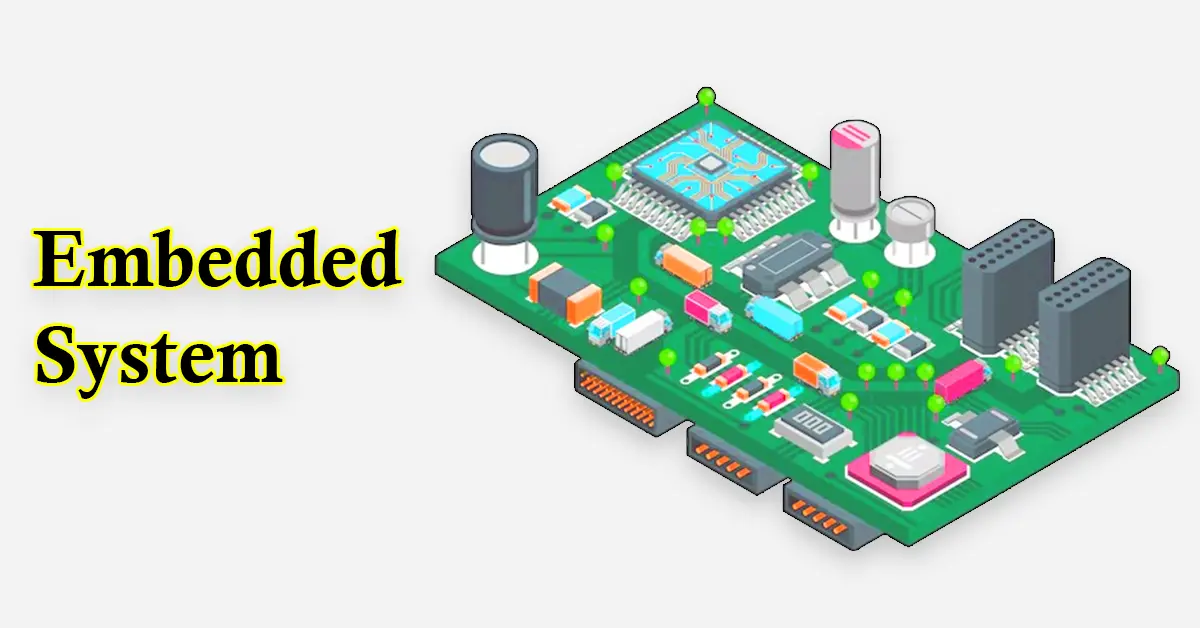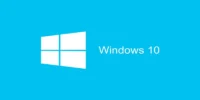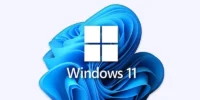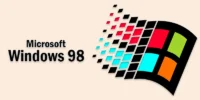Graphics Software | What is, Example, Types, Tips, and More.
Published: 30 Dec 2024
Graphic Software
Ever wonder how professionals create eye-catching designs, or why some visuals just stand out? The secret lies in graphics software—powerful tools that make creative magic possible, whether you’re a beginner or a pro. From editing your vacation photos to designing logos for businesses, these tools simplify the process and turn ideas into stunning visuals. So, if you’ve ever felt frustrated with complex design tools, it’s time to explore how graphics software can help you create with ease.
What is Graphics Software?
Programs used to produce, modify, or design visual content are known as graphics software. Whether you want to touch up a photo, create stunning artwork, or design something professional, graphics software provides the tools you need to bring your ideas to life.
Example of Graphics Software
Here are some popular examples of graphics software:
- Adobe Photoshop: Best for photo editing and digital art.
- Canva: Easy-to-use tool for creating social media graphics.
- GIMP: Free alternative to Photoshop for photo editing.
- Adobe Illustrator: Ideal for creating logos and vector designs.
- CorelDRAW: Used for graphic design and vector illustrations.
- Blender: Popular for 3D modeling and animation.
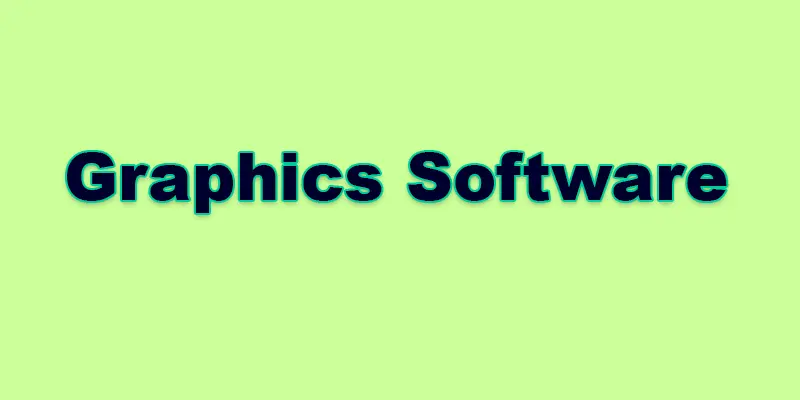
Why is Graphics Software Useful?
Graphics software is useful because it helps create and edit visuals with ease, whether for personal or professional use.
- Allows you to create high-quality images and designs.
- Makes photo editing and retouching simple.
- Helps design logos, posters, and social media content.
- Enables the creation of 3D models and animations.
- Offers easy-to-use tools for beginners and professionals alike.
- Saves time and effort by streamlining the design process.
Types of Graphics Software
Graphics software is essential for creating, editing, and enhancing visual content. From designing logos to editing photos, these tools are used by professionals and beginners alike to bring creative ideas to life. Here are the main types of graphics software:
- Raster Graphics Software
- Vector Graphics Software
- 3D Graphics Software
- Animation Software
- CAD (Computer-Aided Design) Software
Raster Graphics Software
Pixel-based pictures, whether photographs or intricate artwork, are created and edited using raster graphics software. It allows for precise control over color, texture, and details, making it ideal for photo editing and digital painting. Popular examples include Adobe Photoshop and GIMP.
Vector Graphics Software
Because vector graphics software uses paths rather than pixels to create images, designs can be enlarged without sacrificing quality. It’s perfect for creating logos, icons, and illustrations. Popular examples include Adobe Illustrator and CorelDRAW.
3D Graphics Software
Three-dimensional models and animations are produced using 3D graphics software, frequently for virtual reality, video games, and motion pictures. It allows users to design objects and environments in a 3D space, offering tools for sculpting, texturing, and rendering. Popular examples include Blender and Autodesk Maya.
Animation Software
Animation software is used to create moving images, from 2D cartoons to 3D animations. It allows artists to bring characters and scenes to life by controlling movement, timing, and effects. Popular examples include Adobe Animate and Toon Boom.
CAD (Computer-Aided Design) Software
For engineering, architecture, and product design, exact drawings and models are produced using CAD (Computer-Aided Design) software. It helps users design and modify 2D and 3D models with accuracy, making it essential for professionals in construction and manufacturing. Popular examples include AutoCAD and SolidWorks.
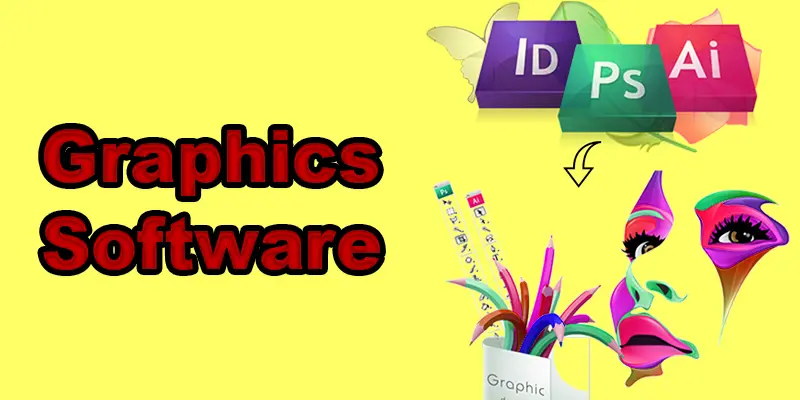
Key Features of Graphics Software
Graphics software offers a variety of features that make designing and editing images easier and more efficient. Here are some key features:
- Layers: Organize elements separately for easy editing.
- Filters and Effects: Apply visual effects like blur, sharpen, or color adjustments.
- Brush Tools: Use different brush styles for painting or drawing.
- Vector Editing: Create scalable designs without losing quality.
- Text Tools: Add and edit text with various fonts and styles.
- Undo/Redo: Quickly correct mistakes with a simple click.
- Export Options: Save designs in multiple formats for different uses.
Popular Graphics Software Options
There are many graphics software tools available, each suited for different skill levels and design needs. Here are some popular options:
For Beginners
- Canva
- Pixlr
- Paint.NET
Canva
- Easy-to-use interface for beginners and pros.
- Provides templates for social media, presentations, and more.
- Drag-and-drop functionality for quick design.
- Access to millions of stock images, icons, and fonts.
- Offers both free and paid plans with advanced features.
- Allows collaboration with team members in real-time.
Pixlr
- User-friendly photo editor with a simple interface.
- Offers both online and mobile app versions.
- Includes essential editing tools like crop, resize, and rotate.
- Provides filters and effects for easy image enhancement.
- Supports layers for more advanced editing.
- Free version with premium features available in the paid plan.
Paint.NET
- Free and easy-to-use photo and graphics editing software.
- Supports layers, allowing for advanced image manipulation.
- Includes essential tools like drawing, cropping, and resizing.
- Offers a variety of filters and effects for image enhancement.
- Lightweight and fast, with a simple interface.
- Ideal for beginners and those looking for basic editing features.
For Professionals
- Adobe Photoshop
- Adobe Illustrator
- Free vs Paid Options
Adobe Photoshop
- Industry-standard software for advanced photo editing.
- Offers powerful tools for retouching, color correction, and manipulation.
- Supports layers, masks, and advanced blending options.
- Provides a wide range of brushes, filters, and effects.
- Compatible with various file formats for flexible editing.
- Extensive support for digital painting and illustration.
- Cloud-based storage and integration with other Adobe products.
Adobe Illustrator
- Ideal for creating vector graphics like logos and illustrations.
- Allows precise control over shapes, paths, and colors.
- Supports infinite scalability without losing quality.
- Offers advanced tools for drawing, painting, and typography.
- Seamless integration with other Adobe Creative Cloud apps.
- Provides a wide range of templates and design assets.
- Compatible with various file formats for easy sharing and export.
Free Options
- GIMP
- Inkscape
- Krita
GIMP
- Free, open-source photo editing software.
- Offers advanced tools for photo manipulation and retouching.
- Supports layers, masks, and customizable brushes.
- Provides a wide range of filters and effects.
- Compatible with many file formats for easy editing.
- Strong community support with numerous tutorials and plugins.
- Lightweight and suitable for basic to intermediate editing tasks.
Inkscape
- Free and open-source vector graphics software.
- Ideal for creating logos, illustrations, and icons.
- Supports scalable vector graphics (SVG) format.
- Provides tools for drawing, shaping, and text editing.
- Offers advanced features like path manipulation and gradients.
- Compatible with various file formats for importing and exporting.
- Strong community support with tutorials and extensions available.
Krita
- Free, open-source digital painting software.
- Designed for artists with tools for sketching, painting, and illustration.
- Supports brushes, textures, and advanced drawing techniques.
- Offers layer management and blending modes.
- Ideal for creating comics, concept art, and animations.
- Customizable interface with numerous plugins available.
- Compatible with various file formats for easy export.
Paid Options
- Adobe Photoshop
- CorelDRAW
- Affinity Designer
Adobe Photoshop
- Industry-leading software for photo editing and manipulation.
- Supports advanced features like layers, masks, and filters.
- Ideal for retouching, color correction, and creative compositions.
- Offers a wide range of brushes, tools, and effects.
- Seamless integration with other Adobe Creative Cloud apps.
- Extensive support for digital art and graphic design.
- Regular updates with new features and tools.
CorelDRAW
- Professional vector graphics software for design and illustration.
- Ideal for creating logos, brochures, and marketing materials.
- Offers powerful tools for drawing, editing, and typography.
- Supports multi-page design and layout.
- Provides advanced color management and vector manipulation.
- Compatible with various file formats for easy export.
- Includes a wide range of templates and design assets.
Affinity Designer
- Professional vector and raster graphic design software.
- Offers precision tools for creating logos, illustrations, and UI designs.
- Provides advanced layer management and blending options.
- Supports both vector and pixel-based editing.
- Compatible with a variety of file formats for import and export.
- One-time purchase with no subscription required.
- Seamless integration with other Affinity products for a complete design workflow.
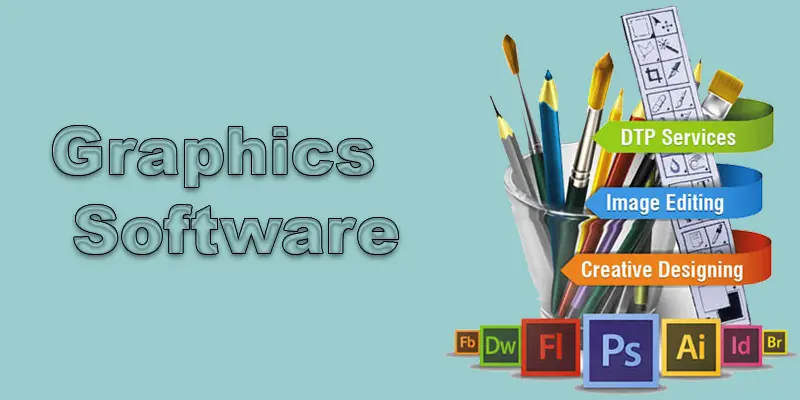
Choosing the Right Graphics Software
Your needs, level of expertise, and the kinds of projects you wish to work on will all influence the graphics program you choose. Whether you’re a beginner or a professional, it’s important to pick a tool that suits your design goals and provides the necessary features.
- Adobe Photoshop
- Adobe Illustrator
- CorelDRAW
- GIMP
- Inkscape
- Affinity Designer
- Canva
- Pixlr
- Paint.NET
- Blender
Top 10 Tips for Using Graphics Software Effectively
- Familiarize yourself with the interface and tools before starting.
- Use shortcuts to speed up your workflow.
- Organize your files and layers for easier editing.
- Regularly save your work to avoid losing progress.
- Practice using different brushes and effects for better control.
- Experiment with layers and masks for non-destructive editing.
- Take advantage of templates to save time.
- Use high-quality images for the best results.
- Learn how to use vector tools for scalable designs.
- Continuously update your software to access the latest features.
Conclusion about Graphics Software
For both personal and commercial endeavors, graphics software is a necessary tool for anyone wishing to create or edit visual content. Based on your needs and skill level, I highly recommend starting with user-friendly options like Canva or Pixlr for beginners, and advancing to more powerful tools like Adobe Photoshop or Illustrator as you gain experience. Remember, choosing the right software can significantly enhance your creativity and efficiency. So, explore these tools today and find the one that best fits your design journey!
FAQS – Graphics Design Software
Raster graphics are made of pixels, making them ideal for detailed images like photos. Vector graphics are ideal for logos and illustrations because they employ paths and can be resized indefinitely without sacrificing quality.
Graphics software is used to create, edit, and manipulate visual content such as images, illustrations, and designs. It’s essential for projects like photo editing, digital art, and graphic design.
Yes, free graphics software like GIMP and Inkscape can be used for professional work, although they may lack some advanced features of paid software. Many professionals use these tools for high-quality results.
Canva and Pixlr are excellent choices for beginners because they are user-friendly and offer simple tools and templates. They’re perfect for people just starting with design.
Yes, many graphics software options, like Canva, Adobe Photoshop Express, and Pixlr, have mobile versions. These apps allow you to create and edit designs on your smartphone or tablet.
It depends on the software. Basic tools like Canva can run on most devices, but more advanced software like Adobe Photoshop may require a faster computer with more memory for smooth performance. Always check the system requirements before downloading.

- Be Respectful
- Stay Relevant
- Stay Positive
- True Feedback
- Encourage Discussion
- Avoid Spamming
- No Fake News
- Don't Copy-Paste
- No Personal Attacks

- Be Respectful
- Stay Relevant
- Stay Positive
- True Feedback
- Encourage Discussion
- Avoid Spamming
- No Fake News
- Don't Copy-Paste
- No Personal Attacks
